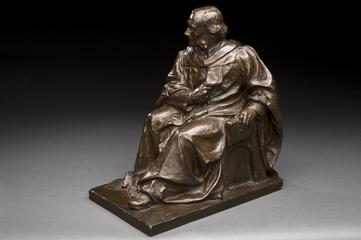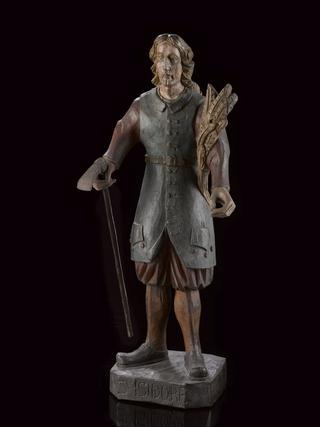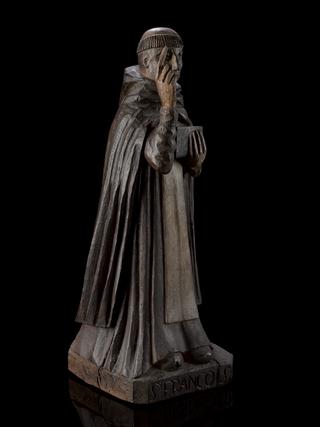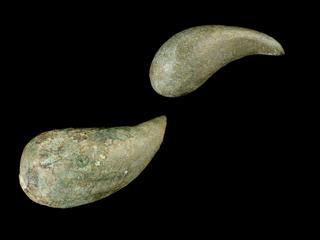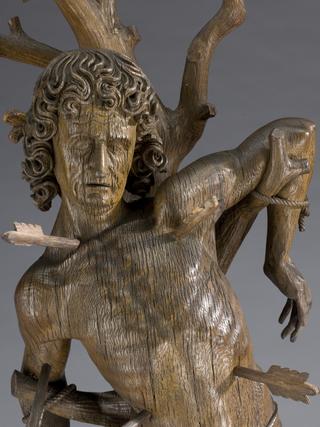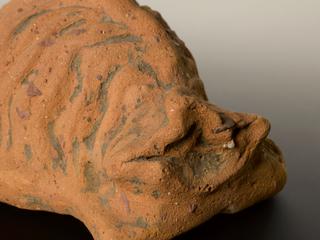




Set of two strigils on ring, bronze, 1880-1920 copy of Roman original, 200BC to 200AD
Part of the bathing and personal hygiene routine in ancient Rome involved cleaning the body with oil. Having rubbed the oil in, a strigil was used to scrape away any excess as well as any dead skin and dirt. Athletes also used strigils to remove dirt, dust and oil from their bodies after exercise. This was sometimes bottled and sold as a medical treatment called gloios to relieve aches, pains and sprains.
This is a typical example made from bronze with a claw-like shape. The original dates from 200 BCE-200 CE.
Details
- Category:
- Classical & Medieval Medicine
- Collection:
- Sir Henry Wellcome's Museum Collection
- Object Number:
- A635507
- Materials:
- bronze
- Measurements:
-
overall: 105 mm x 255 mm 100 mm, .47kg
- type:
- strigil
